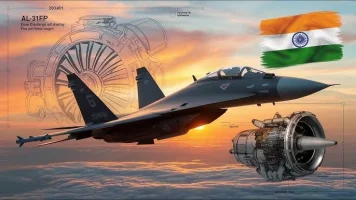2. After 17B, what is plan - P19 or a follow on 17C?
For your second question, based on my reading of Indian naval thought and the naval strategy, there are two paths I think possible that the Navy may take. The first of these (Path A) involves the Navy getting massive levels of funding in the next two decades, and becoming a stand-alone force. The second path (Path B) is the more economical option, and means the Navy becomes a powerful force, albeit one that would also act in some form of supporting capacity in war, besides a reduced ambit of stand-alone operations.
I should preface what comes next with the disclaimer that no one can predict the future, let alone me. This is based on my understanding and analysis of Indian naval strategic thought. This will also be a very long comment, so shall use seperators (--------) to make it more readable.
That said, both options also mean that the Indian Navy will remain the undisputed master of the IOR short of someone like China or the USA deploying a permanent fleet.
-----------------------------------------------------------------------------
A small piece of advice: A lot of numbers will follow, so I would recommend taking a pen and paper or an Excel sheet and mapping these out for better understanding. Please also note that some of the older ships presently in service will not be included in the following numbers, as I assume they will be replaced by some of the ships planned hereafter.
1. Path A: This involves a force of five to six carriers besides around 8 SSBNs, 8 to 10 SSNs, 36 SSKs, and 100 surface combatants. These 100 combatants would comprise around 20 destroyers, 32 to 36 frigates, 14 to 18 anti-surface corvettes, and 30 ASW corvettes (18-20 coastal ASW corvettes plus 10-12 oceanic ASW corvettes).
2. Path B: This involves a fleet of three to four carriers besides 6 SSBNs, 6 to 8 SSNs, 28 to 30 SSKs, and 80 surface combatants. These surface combatants would comprise 16 destroyers, 28 to 30 frigates, 14 to 16 anti-surface corvettes, and 20 ASW corvettes (16 coastal ASW corvettes plus 4 oceanic ASW corvettes).
--------------------------------------------------------------------------------
Key to projects:
Destroyers:
P-15 is the Delhi-class.
P-15A is the Kolkata-class.
P-15B is the Visakhapatnam-class.
P-18 are the NGD.
Frigates:
P-16A is the Brahamputra-class.
P-17 is the Shivalik-class.
Talwar-class refers to the three Batch 2, two Batch 3, and two Batch 4 ships (7 in total, with the last four yet to be commissioned) unless stated otherwise.
P-17A is the Nilgiri-class.
Corvettes:
P-28 is the Kamorta-class.
ASW-SWC are the coastal ASW corvettes presently being built.
NGMV are the under-construction anti-surface corvettes, known as the Next-Generation Missile Vessels.
NGC is the planned Next-Generation Corvettes.
---------------------------------------------------------------------------------------
That said, let's go further. I shall limit this to just the surface combatants. Let's first assume Path A is taken. Against that fleet build-up, we have 15 to 17 destroyers (3 P-15A + 4 P-15B + 8-10 P-18), 24 to 25 frigates (7 Talwar + 3 P-17 + 7 P-17A + 7-8 P-17B), 14 anti-surface corvettes (6 NGMV + 8 NGC), and 20 ASW corvettes (4 oceanic P-28 + 16 coastal ASW-SWC) corvettes present or on order or in the planning stage.
That leaves, within Path A, space for 3-5 destroyers, 8-12 frigates, 0-2 anti-surface corvettes, 2-4 coastal ASW corvettes, and 6-8 oceanic ASW corvettes. In this, I feel we may end up with a class of 5 mid-sized destroyers (similar to some upgunned P-15B variant, with 8 P-18s being built), a class of 4 large frigates (perhaps Project 17C), a class of 8 mid-sized frigates (perhaps Project 19), a class of 4 Batch 2 ASW-SWC coastal ASW corvettes, and a class of 8 new oceanic ASW corvettes. Procurement of anti-surface corvettes would stop at present levels. Later on, replacements of older ships (3 destroyers, 6 frigates, and 4 oceanic ASW corvettes would be followed by modified variants of earlier designs).
--------------------------------------------------------------------------------
Finally, we come to Path B. Assuming this is taken, we already have 15 to 17 destroyers (3 P-15A + 4 P-15B + 8-10 P-18), 24 to 25 frigates (7 Talwar + 3 P-17 + 7 P-17A + 7-8 P-17B), 14 anti-surface corvettes (6 NGMV + 8 NGC), and 20 ASW corvettes (4 oceanic P-28 and 16 coastal ASW-SWC) present, on order, or in planning. That means destroyers and corvettes are pretty much done for now.
That leaves us space for 4 to 6 frigates. In this scenario, I have a feeling that P-18 procurement may be limited to 9 ships (kind of 6 P-18 + 3 improved P-18). Furthermore, we may then see P-17B be restricted to 7 ships, with the Batch 1 Talwars and Project 16A (the Brahmaputra-class) frigates being replaced by a class of six mid-sized frigates. Again, when the time does come for the replacement of ships like the P-15A destroyers, Batch 2 Talwars, P-17 frigates (Shivalik-class), and others, we may well see some of those getting merged together (such as the P-15As and P-17s getting replaced by a class of mid-sized destroyers).
-------------------------------------------------------------------------------
Personally, I feel that given the prospects of increased defence spending over the next 20 years or so and a renewed focus on submarines, Path B would be more likely. Depending on how Indian shipyards and the economy performs, we may even see something between the two paths. Of course, there are literally hundreds of factors at play here, so saying anything for sure is impossible. This is just an estimate. Do let me know what you think.



